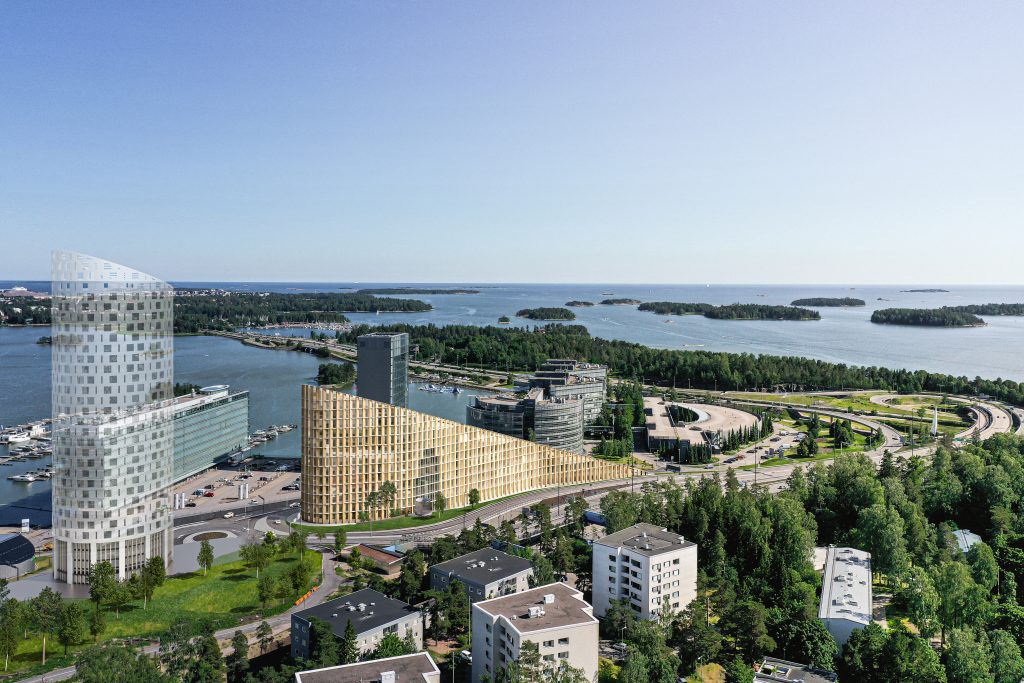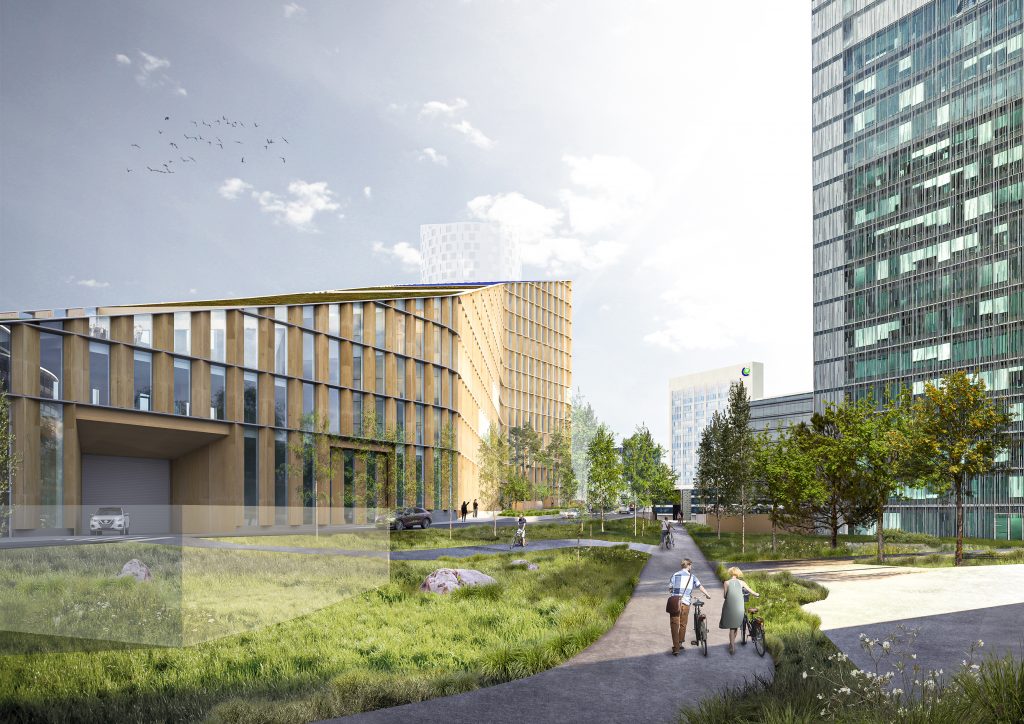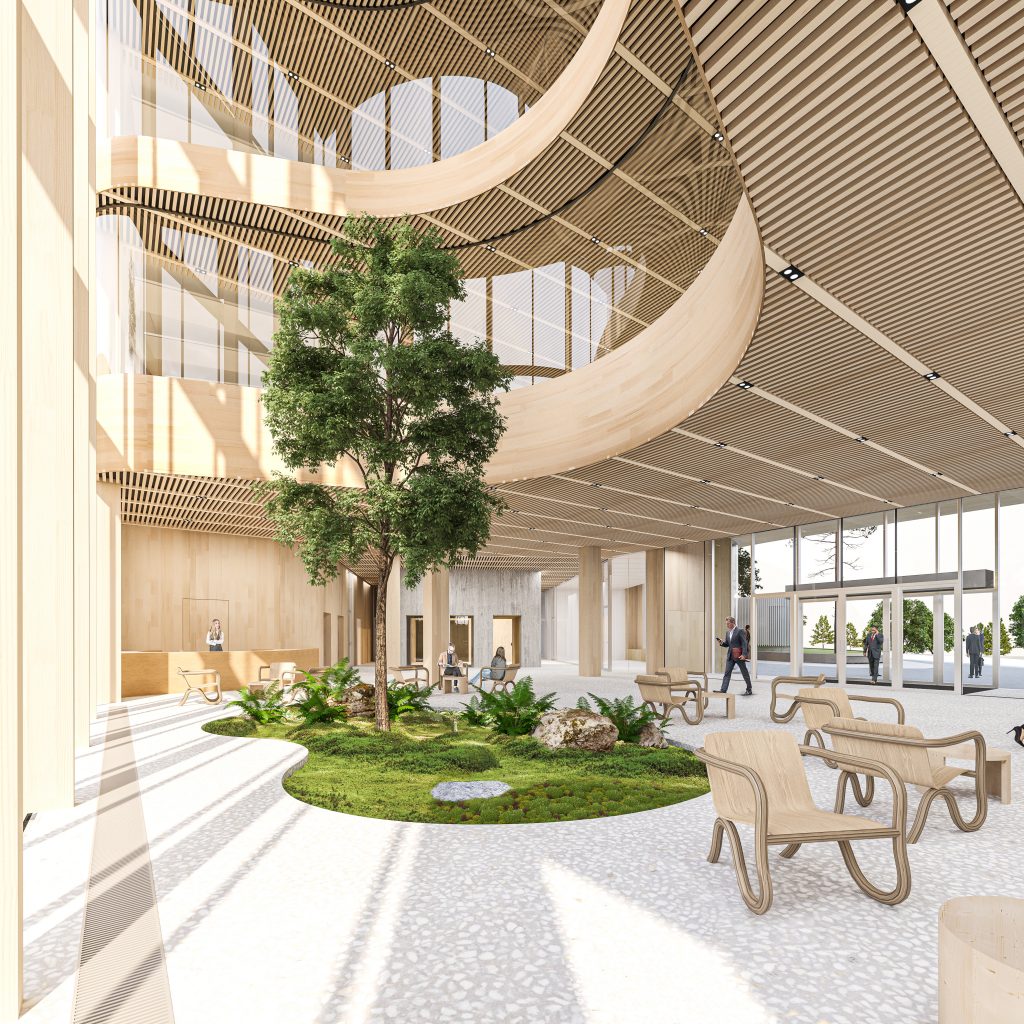Wood is a natural presence at Keilaniemen Portti and in Varma’s responsible construction

For the Varma Pension Insurance Company, the mitigation of climate change is a key corporate social responsibility. It also plays a key role in new construction projects. Keilaniemen Portti is Varma’s flagship site: an architecturally impressive wood office building that features sustainable development and environmental friendliness in its design in an atypical way.
The article has been published in June 2021 in Wood magazine 1/2021.
Text: Mia Heiskanen | Photographs: Varma
Read the article in Finnish: Puu on luontaisesti läsnä Keilaniemen Portissa ja Varman vastuullisessa rakentamisessa
Varma aims to have environmentally-friendly investments make up 20% of all its pension insurance investments by 2025. When constructing new buildings, Varma chooses energy-efficient construction solutions and environmentally-friendly materials when possible. As a wood office property, Keilaniemen Portti fits in perfectly with these overall goals.
– At Varma, wood construction has emerged as a key theme for the future. This will be reflected in both residential and commercial construction. We have several wood buildings planned. One of them is our flagship project of Keilaniemen Portti, which manifests many practical construction techniques for responsible construction. Personally, I strongly believe that wood is the material of the future and that its significance in Varma construction projects will grow, says Sari Raunio, Property Development Director.

Wood serves as an attraction
Varma has noticed that wood has a positive image.
– Wood construction is also attractive to investors even if construction costs are currently still higher than for traditional concrete construction. As wood construction grows more common, new suppliers will enter the market. This will accelerate a reduction in wood construction costs. Good examples of increasingly common developments in recent years include factory-built modular solutions and volumetric elements for wood construction, says Construction Manager Jouko Räisänen.
Having nature present increases well-being at work
When completed, Keilaniemen Portti will be a sculptured, unique office building that will stand out from the other office buildings at Keilaniemi in Espoo.
– The building has a sloping green roof as one of its facades, becoming a highly visible part of the cityscape. This will make it a prominent presence, differing from more typical green roof solutions where the green roof structures tend to be out of sight of any passersby at street level. Making nature a strong presence has been a general theme of the project design. This desire to bring nature closer to the office is not only displayed in the material selections but also in the form of an actual tree growing inside the building. Nature’s impact on people’s well-being cannot be denied and research has shown that wood increases people’s general welfare. This all links seamlessly to Varma’s fundamental task of supporting the well-being of people at work, Räisänen explains.
A pilot project for circular economy construction
The Keilaniemen Portti project also allows Varma to pilot design and construction approaches for the circular economy.
– The possibility to recycle and break down the construction materials was analysed as early as in the design stage, says Raunio.
At Keilaniemen Portti, the term break down means that all building components and elements are documented. The documentation serves as a material register for the building.
– This gives us a comprehensive understanding of the products and materials used in the building. This in turn makes it easy to reuse the materials at other locations if the building is torn down at the end of its life cycle, Räisänen explains.
In Varma’s definition, construction that follows the principles of the circular economy includes selecting construction materials that make the building as long-lasting and environmentally-friendly as possible. Buildings are designed to be energy efficient, and construction waste and environmental impacts are minimised. In addition, each building’s spaces are designed to be reconfigurable according to future needs.

What is the office of the future like?
Varma is also in a good position to shed light on trends in office construction and whether the Covid-19 pandemic has changed perspectives on the office of the future.
– The importance of being able to reconfigure office spaces will undoubtedly grow. In addition, the pandemic has increasingly changed the significance of office spaces as people now work from home more. Businesses will probably not need as much space. On the other hand, the importance of community in offices will grow because the office is the place where colleagues can meet or brainstorm. People will do their work in many more places than before. I believe that a hybrid model where companies may have satellite offices supplementing their core office has a future. This may include leasing spaces by the hour or concluding short term rental agreements. It will be more important than ever that space solutions can be reconfigured to meet changing needs. These types of solutions are also being pondered in the design for Keilaniemen Portti, Raunio says.
- Read the whole Wood magazine 1/2021.
- Subscribe Wood Magazine now.
